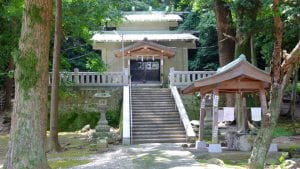The 1096 Nankai Trough tsunamigenic earthquake devastated communities along the Suruga and Ise coasts. The earthquake also caused damage to large and symbolically important buildings in the capital in Kyoto – this damage is better recorded in historical sources than that from the vulnerable communities on the coast. The difference in the scale of the damage and what is known about it in both areas are reflections of both the political and physical landscapes. Responses to the disaster, too, were shaped by this distance, with the concerns of the capital taking precedence.
This is an abstract for an article appearing in the online journal Arcadia. To read the full text of this article, click here.

Related: Terms of Disaster collection
Kristina Buhrman is an Assistant Professor in the Department of Religion at the Florida State University. She received her Ph.D. from the Department of History at the University of Southern California with the dissertation “The Stars and the State: Astronomy, Astrology, and the Politics of Natural Knowledge in Early Medieval Japan” (2012). Her research is on the interpretation of nature, particularly natural disasters, in premodern Japan, a topic that combines the history of science with political history and the history of religions. She lends Teach 3.11 her expertise and interest in the history of disasters in Japan before the modern period. Aside from her premodern focus, she is interested in the modern interaction between East Asian religions and science, and in collaborations between historians and scientists in making risk assessments. Kristina graduated from Cornell University with a B.A. in Linguistics with a concentration in Cognitive Studies, and before entering her Ph.D. program she worked as a website support specialist for the Cornell University Libraries.
* * *
The Teach311 + COVID-19 Collective began in 2011 as a joint project of the Forum for the History of Science in Asia and the Society for the History of Technology Asia Network and is currently expanded in collaboration with the Max Planck Institute for the History of Science(Artifacts, Action, Knowledge) and Nanyang Technological University-Singapore.
![[Teach311 + COVID-19] Collective](https://blogs.ntu.edu.sg/teach311/files/2020/04/Banner.jpg)